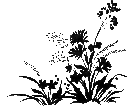 |
The Preserve |
News and Events |
Natural History |
The Trail |
Monitoring |
Restoration |
Library |
Organization |
|
Todmorden Mills Wildflower Preserve
|
Nature NotesYour Nature Guide for the week August 23-August 29InsectsThis time of year, wasps can be a nuisance at picnics. The main culprits are the yellowjackets-- stocky, "school-bus yellow" wasps with geometric black markings on the abdomen. The German Yellowjacket is the most aggressive picnic wasp; not only will it sting with little provocation, it persists longer into the fall than the native yellowjackets. Their numbers have increased steadily all summer, and now the workers are ranging widely from the nest to catch caterpillars or collect rotting meat for the larvae back in the nest. Workers sustain themselves on nectar from flowers such as Goldenrod, and sugars from rotting fruit. The traditional picnic table replete with hamburgers, fruit and pop therefore provides a ready source of food for the wasps. The Carolina Grasshoppers, which flash their black and light-yellow hind wings when flushed off the trail, are abundant at present. The male song of Field Crickets and Cicadas dominates the meadow during the afternoon, and at dusk the Tree Crickets begin calling in earnest from the edges of the forest. Two of our largest species of dragonflies, Green Darner and Whitetail, are patrolling the airspace above the meadow. They use their bristly front legs as a dragnet to ambush prey in mid-air. Look for the pair of Whitetails which likes to bask on the boulders at the southern trailhead. WildflowersOn the edges of the cattail marsh at the southern end of the Preserve, Turtlehead and Joe Pye Weed continue to flower. The bulbous white flowers of Turtlehead are attractive to bees; the flat-topped deep-pink flowerheads of Joe Pye Weed provide a stable landing platform for butterflies seeking nectar. On the woodland trail, look for Zig-zag Goldenrod and the pink Hedge Bindweed. In the open areas and meadow, the yellows of Goldenrod, Cup Plant and Coneflowers contrast with the white Queen Anne's Lace and the blue flowers of Chicory. Many of the Queen Anne's lace flowers have been pollinated and have started to form the distinctive "bird's nest" seedhead. Asters are just starting to produce their distinctive purple and mauve-coloured flowers. BirdsThe American Goldfinches are shepherding their fledglings around the meadow. Goldfinches time their nesting to coincide with the flowering of thistles--now bursting with seeds. In the swamp areas of the woodland trail, you may catch a fleeting glimpse of a Ruby-throated Hummingbird feeding at the pendulous orange blossoms of Spotted Jewelweed. High above the Preserve, you can expect to see Red-tailed Hawks soaring in the thermals. Their numbers will pick up as fall progresses and the southward migration of birds of prey intensifies. The Don valley is an important flight corridor for many migrating birds. Nature Notes is researched and written by Mike Dennison and Alejandro Lynch, and is published each week by Hopscotch Interactive (www.hopscotch.ca). In addition to this online version, Nature Notes is available as a print-friendly PDF and as a text-only email version. Please contact Mike Dennison to receive these, or for more info (tel: 416-696-7230, email: dennison@hopscotch.ca). |
| Copyright © 2003-2004 Todmorden Mills Wildflower Preserve |